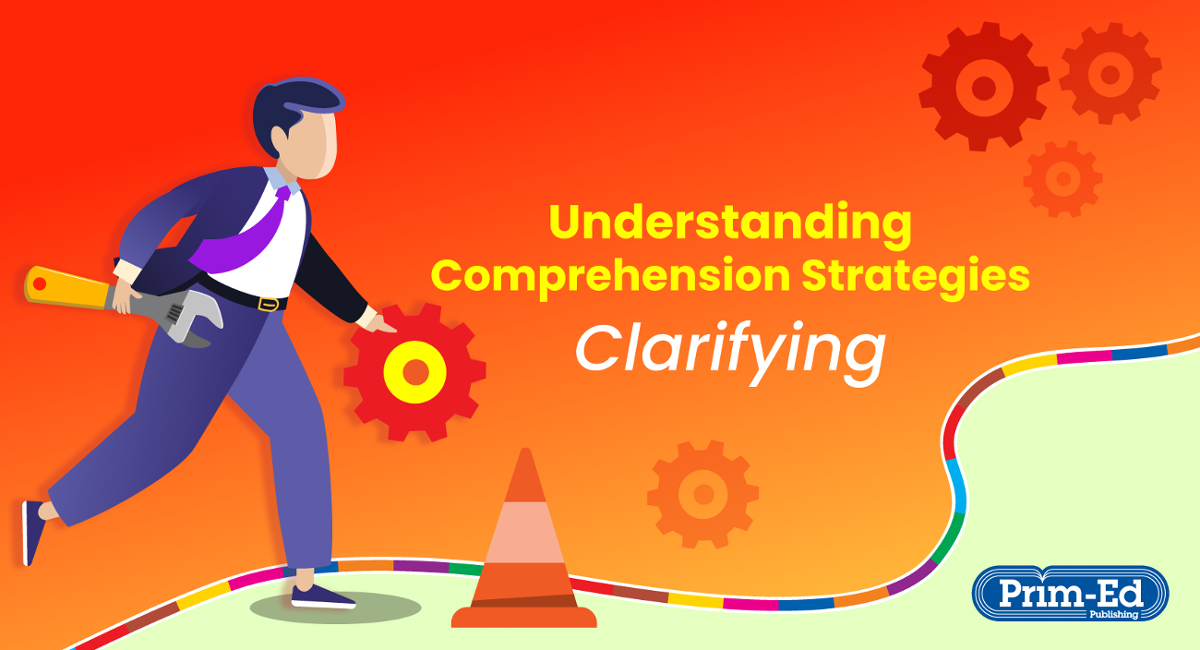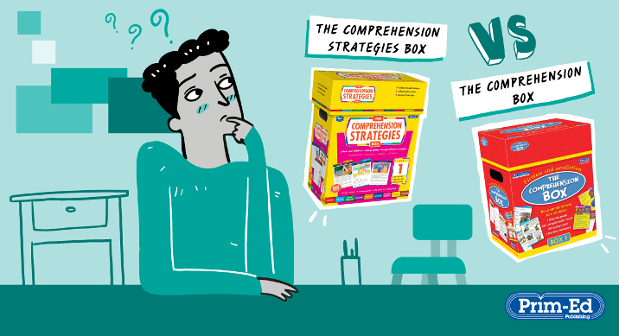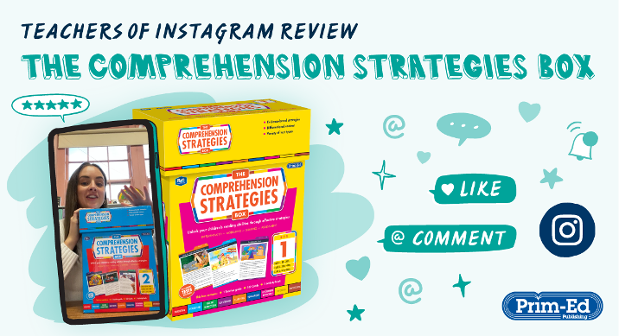- Wednesday 30 September 2020
Reading Comprehension Strategies – Clarifying
The Clarifying Reading Comprehension Strategy
Understanding what they read is one of the biggest difficulties a child will have while reading. It is therefore crucial that they are explicitly taught a range of strategies to encourage and master reading comprehension.
Clarifying is one of many important reading strategies for children to learn and can also be called self-monitoring and fixing-up.
Clarifying involves children identifying problem areas and then using ‘fix-up’ or repair strategies such as reading on (to give more information), re-reading more slowly, looking at pictures, consulting a dictionary, using prior knowledge, reflecting on the text read so far, rephrasing a difficult sentence or section of a text in their own words, or thinking about what the writer is trying to say. If they are reading and the text doesn’t make sense, children should stop and use one of the fix-up strategies to help them to understand what they are reading. The answer may be in the text, in their mind or in another source like a dictionary.
This strategy also contains elements of declunking. Declunking relates to removing chunks or obstacles to understanding, such as a difficult word that needs to be decoded. Declunking can involve developing decoding skills (sounding out and looking for letter blends, prefixes and suffixes, root words, and so on) and increasing vocabulary. It can include re-reading a sentence to work out the meaning of a word within a context.
Clarifying in the Classroom
Teachers can develop children’s clarifying skills and therefore their ability to comprehend texts in a variety of ways.
The teacher can get children to look at pictures or images and then ask questions such as What is wrong in the picture? or What is missing? This can lead on to questions like What should happen next? and What should happen before this?
Children can be given oral sentences that are silly or nonsense. The teacher could ask questions like What is wrong with the sentence? and What should the sentence be?
Children can also work with written texts. They can read the title, ensure they understand the meaning of all the words, and discuss any prior knowledge they have of the subject. They could also look at the illustrations and layout, which may also help them to comprehend the content of the text. The text genre may also offer clues for understanding the text. If the children work in groups at reading a text, they could annotate it to show where they experience difficulties with comprehension. They could then decide on the best ‘fix-up’ strategies to use and why.
The teacher can read a difficult or unfamiliar text with the children, stopping after words, sentences or paragraphs to make them clear. The teacher can then demonstrate ‘think-out’ strategies; for example, know how to decipher tricky words, to re-read the sentence (and the sentences before and after) to get a better meaning, to use prior knowledge to make predictions or text connections, and to think about what the writer was trying to say.
Templates could be used to help children record their clarifications in an organised way. These should encourage the children to identify the part of a text they don’t understand or have difficulty with, the fix-up strategy they decided to use, and what, as a result of using this strategy, they now understand.
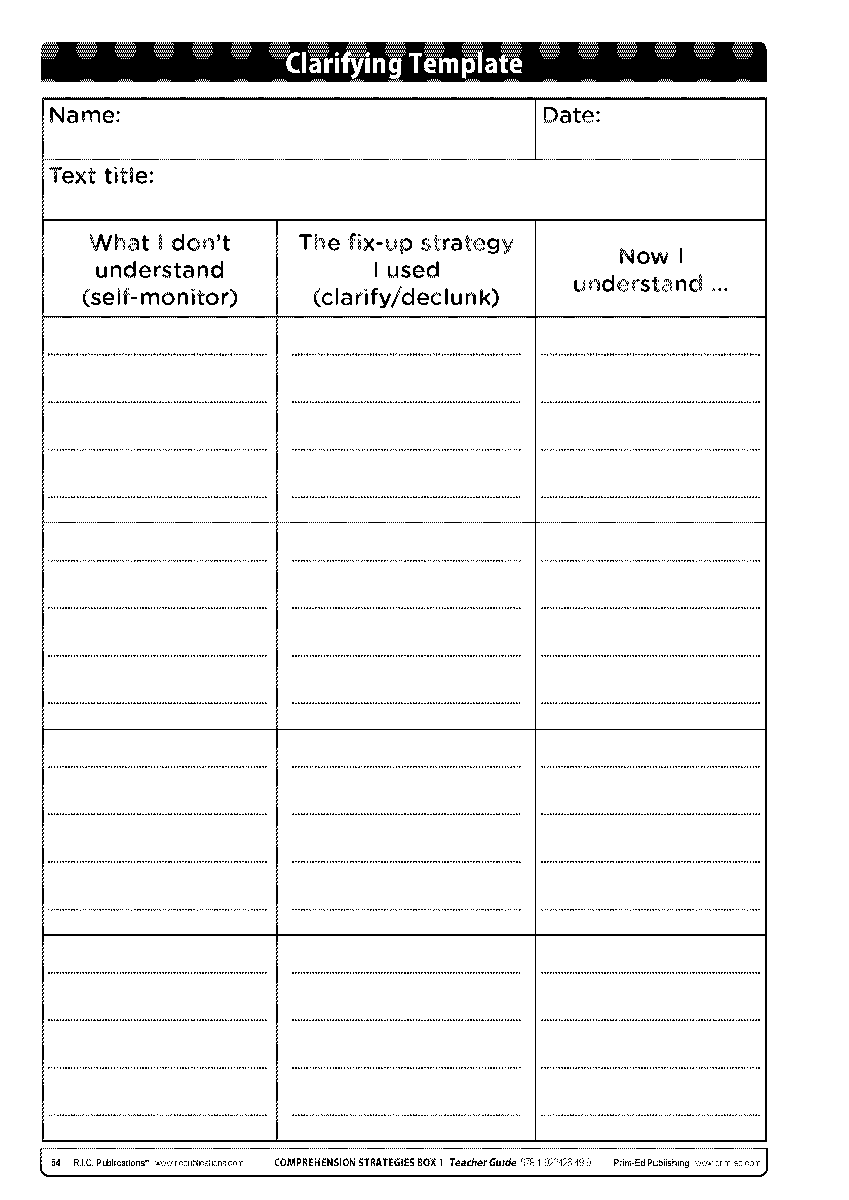
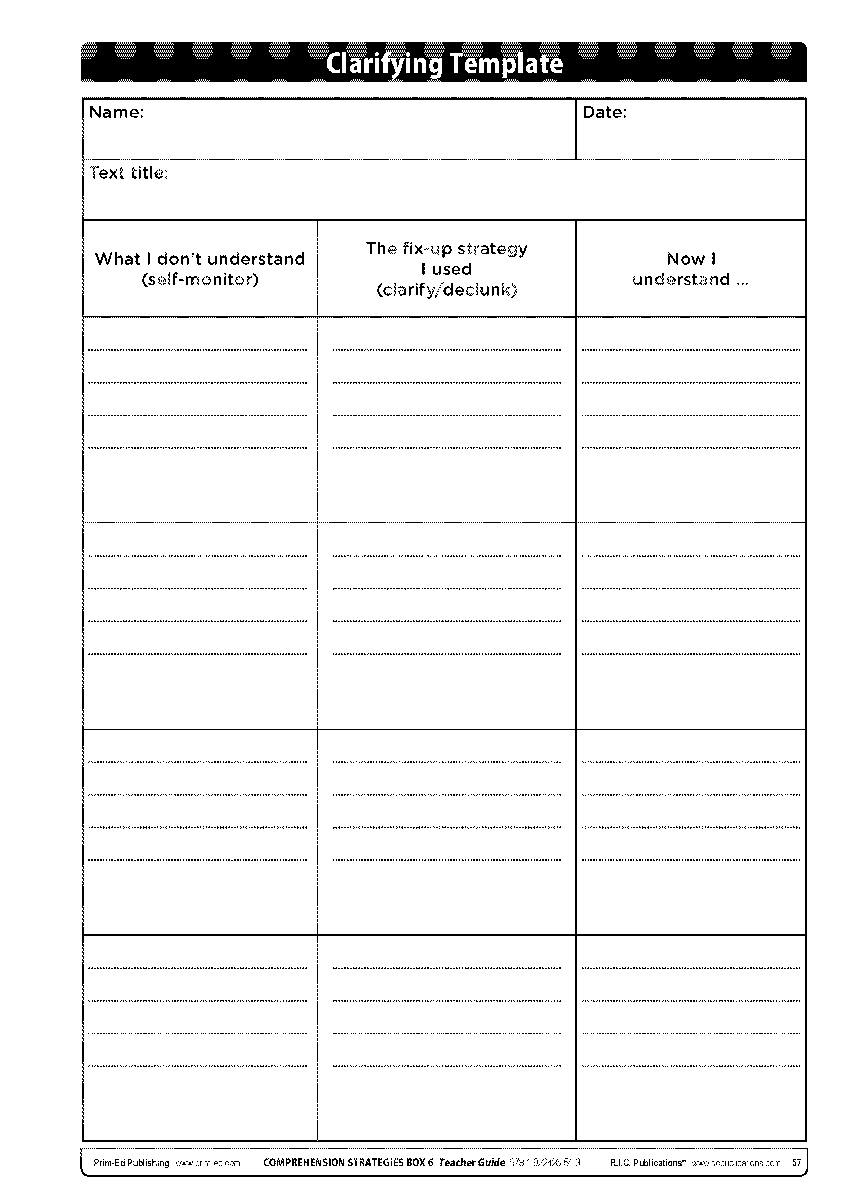
Templates from Teacher Guides in The Comprehension Strategies Box series.
Clarifying in The Comprehension Strategies Box
Clarifying is the fifth of nine reading comprehension strategies covered in the The Comprehension Strategies Box series. This boxed series, written at six levels for the six main primary school years, consists of full-colour, differentiated, fiction and non-fiction reading cards which cover nine different comprehension strategies, a comprehensive teacher guide that explains the strategies and how to use the series, and an activity book with photocopiable activities to enable children to focus on and practise each strategy.
Each reading strategy is introduced in the teacher guide, with a page of background information for teachers to familiarise themselves with.
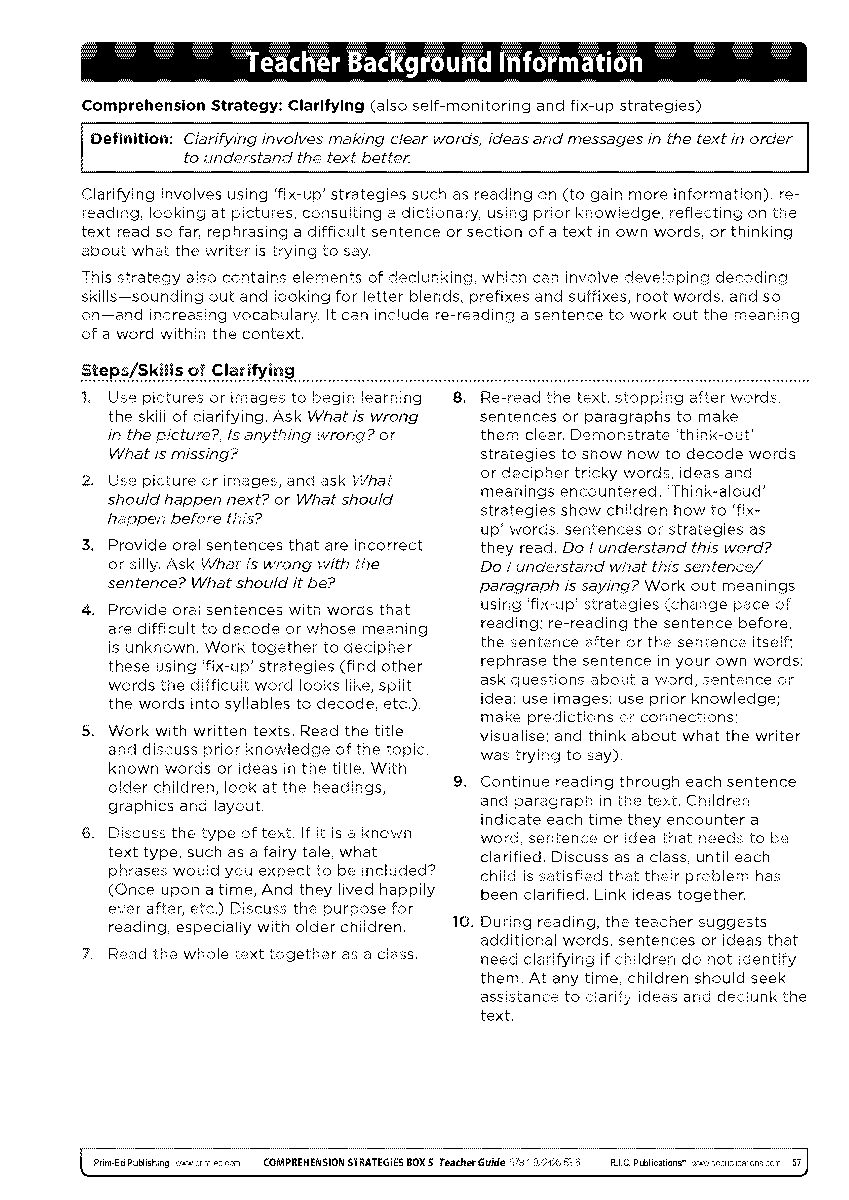
Sample page from Teacher Guide 5 in The Comprehension Strategies Box series.
The teacher should use the modelling text provided to introduce and demonstrate the clarifying comprehension strategy to their class. The illustrated text should be displayed onto an interactive whiteboard, to enable the teacher to conceal and reveal parts of the text to the children, and highlight text and add annotations as appropriate. The steps the teacher should go through to model and teach the strategy are clearly laid out in the teacher notes. The modelling is oral and includes what the teacher should say at various stages of reading the text; for example, the title, the first paragraph, and so on. To start, the strategy is explained, before the children are directed to look at the images, title and headings and answer questions about them. The text is then studied, section by section, with a wide range of fix-up strategies being covered through a variety of questions.
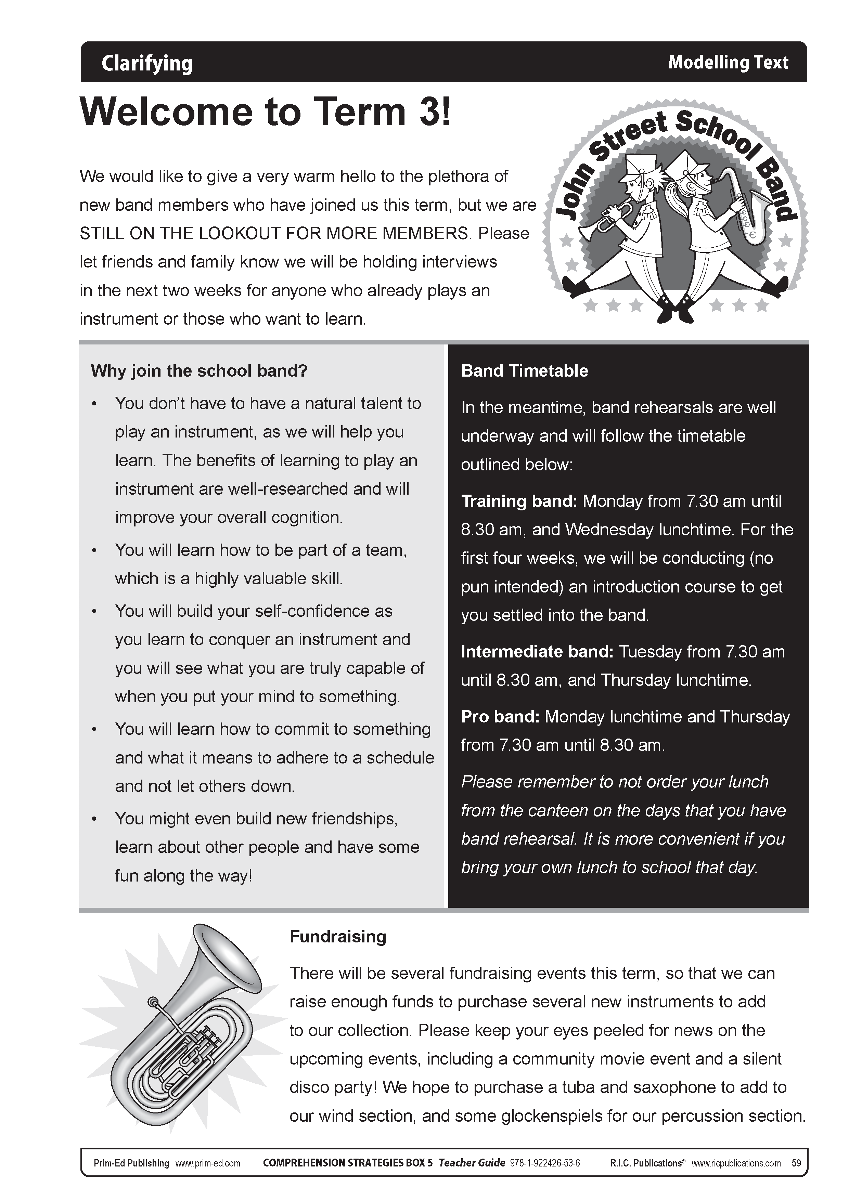
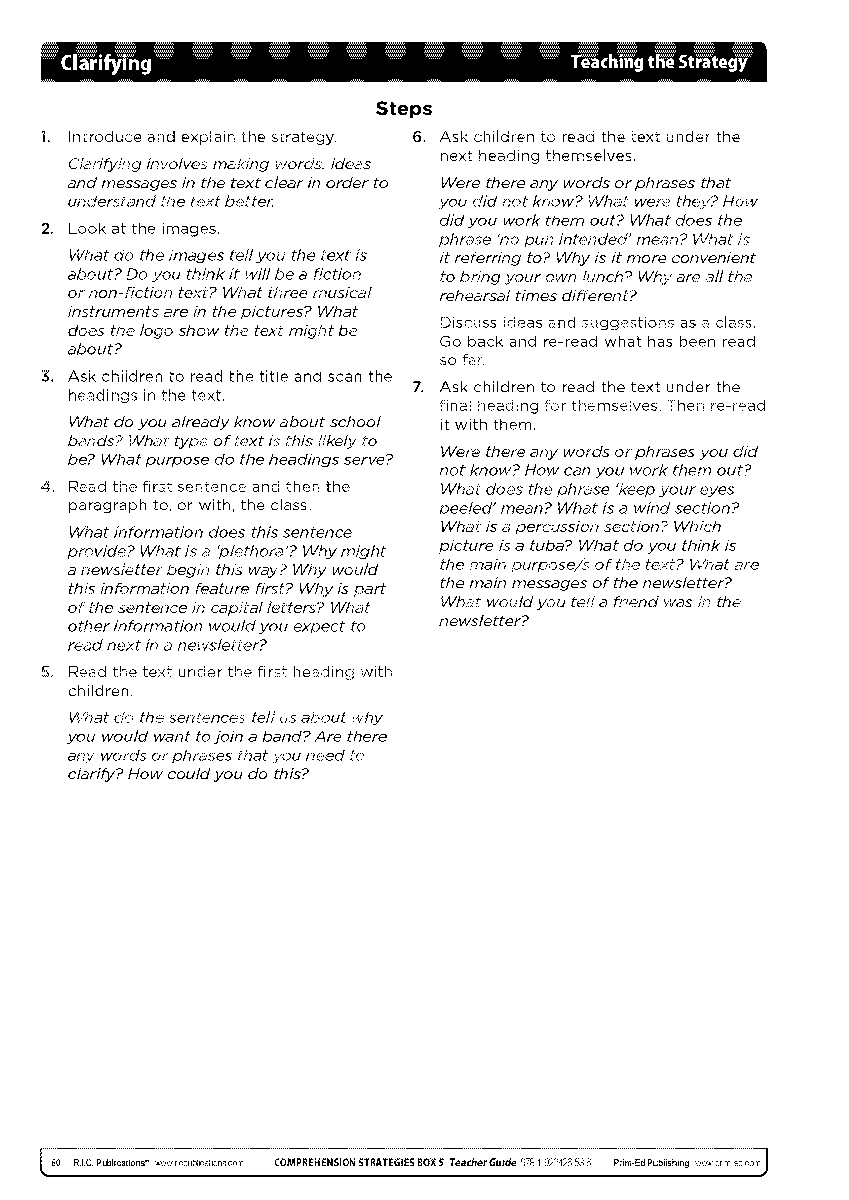
Sample pages from Teacher Guide 5 in The Comprehension Strategies Box series.
In a similar way to how the modelling text was presented and used with the class, the teacher should then present the sharing text. This can either be another oral activity or children may work with each other to answer the questions and practise the strategy together.
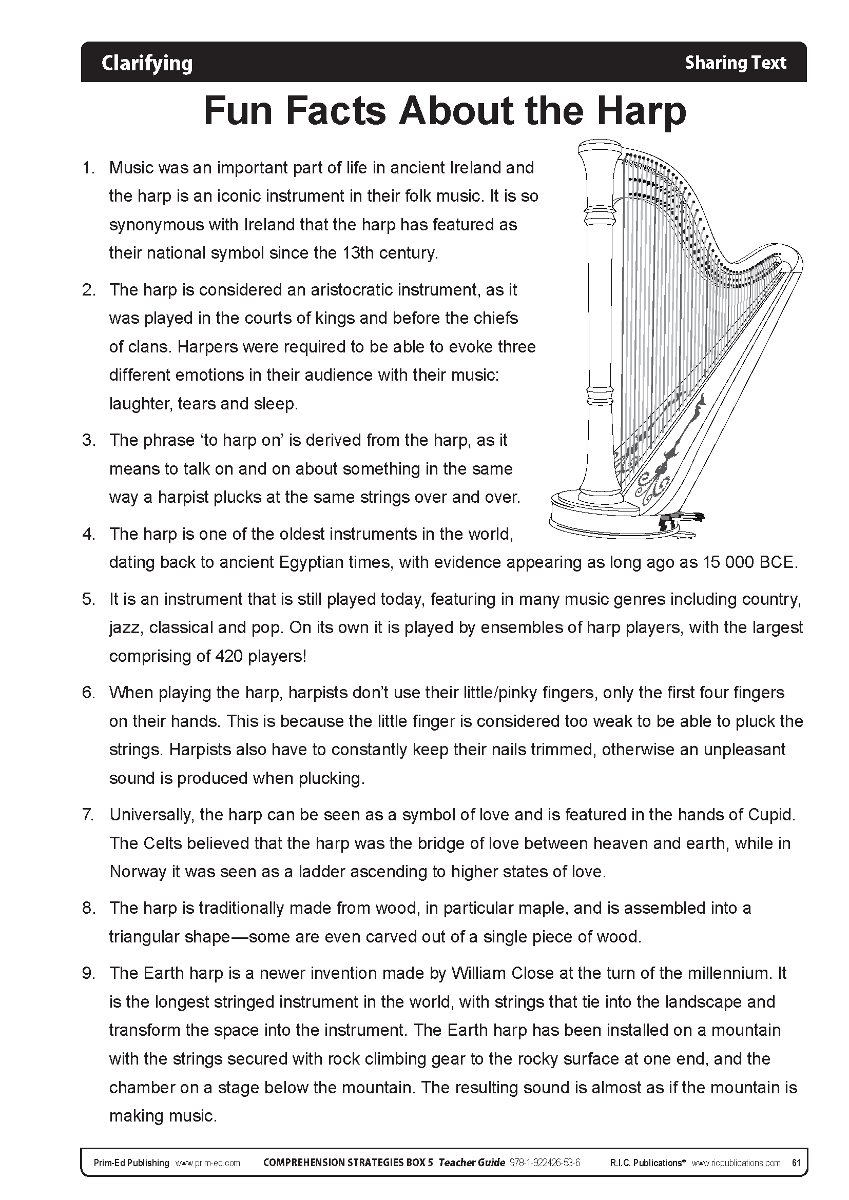
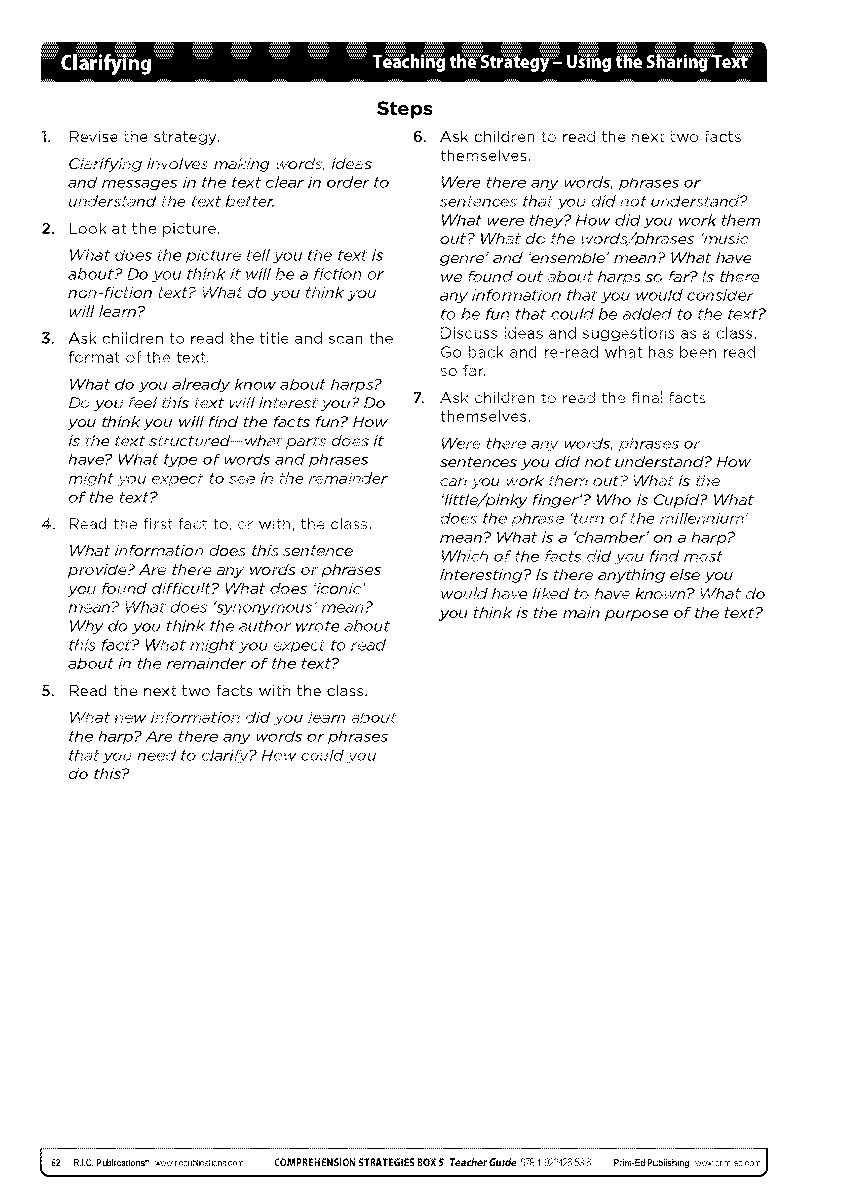
Sample pages from Teacher Guide 5 in The Comprehension Strategies Box series.
The children can then work on some of the activity cards, either individually, in pairs or in small groups. The teacher should select a particular level of card (1, 2 or 3), depending on the reading level of the child or group. A placement test is provided to help with this. There are two texts on each card, so children can practise the clarifying strategy using more than one text. The children should use the corresponding resource sheets in the activity book which pose questions and activities that children will need to use clarifying skills to answer.
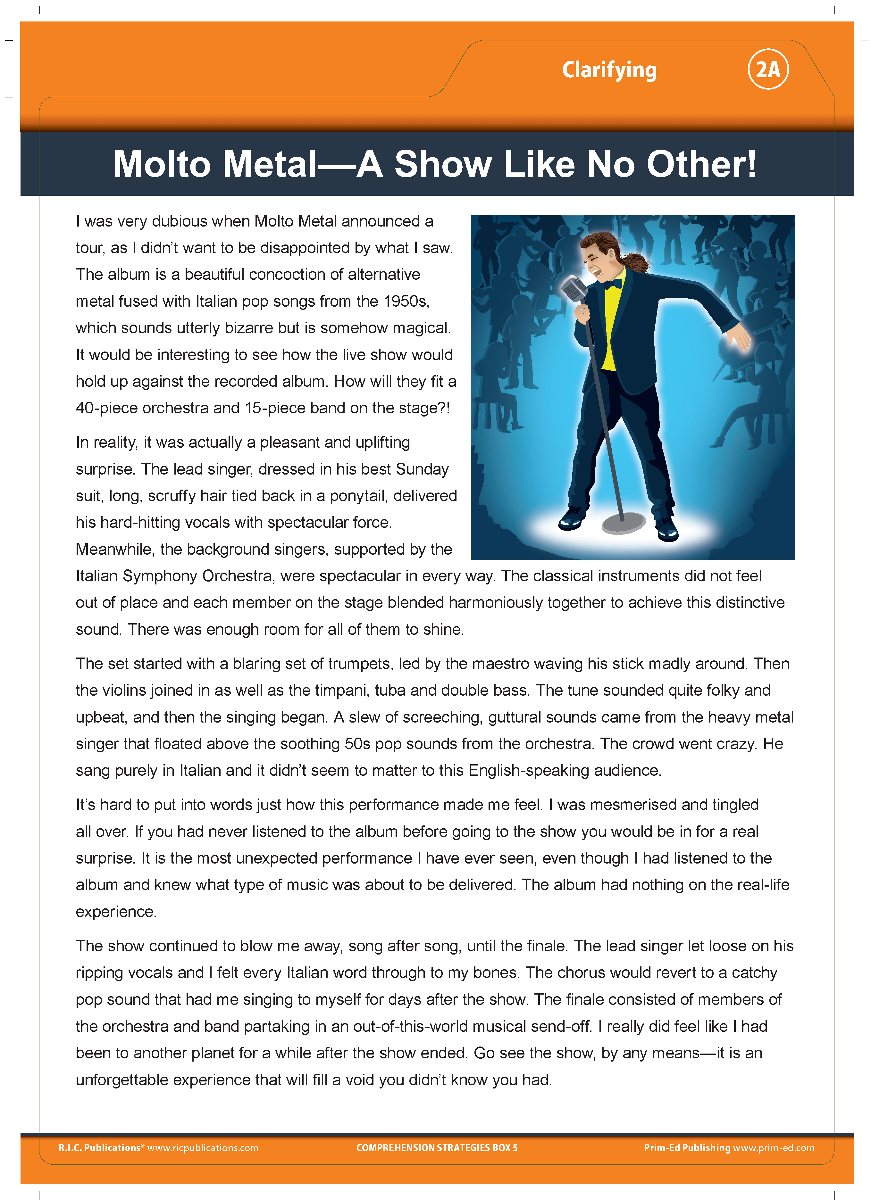
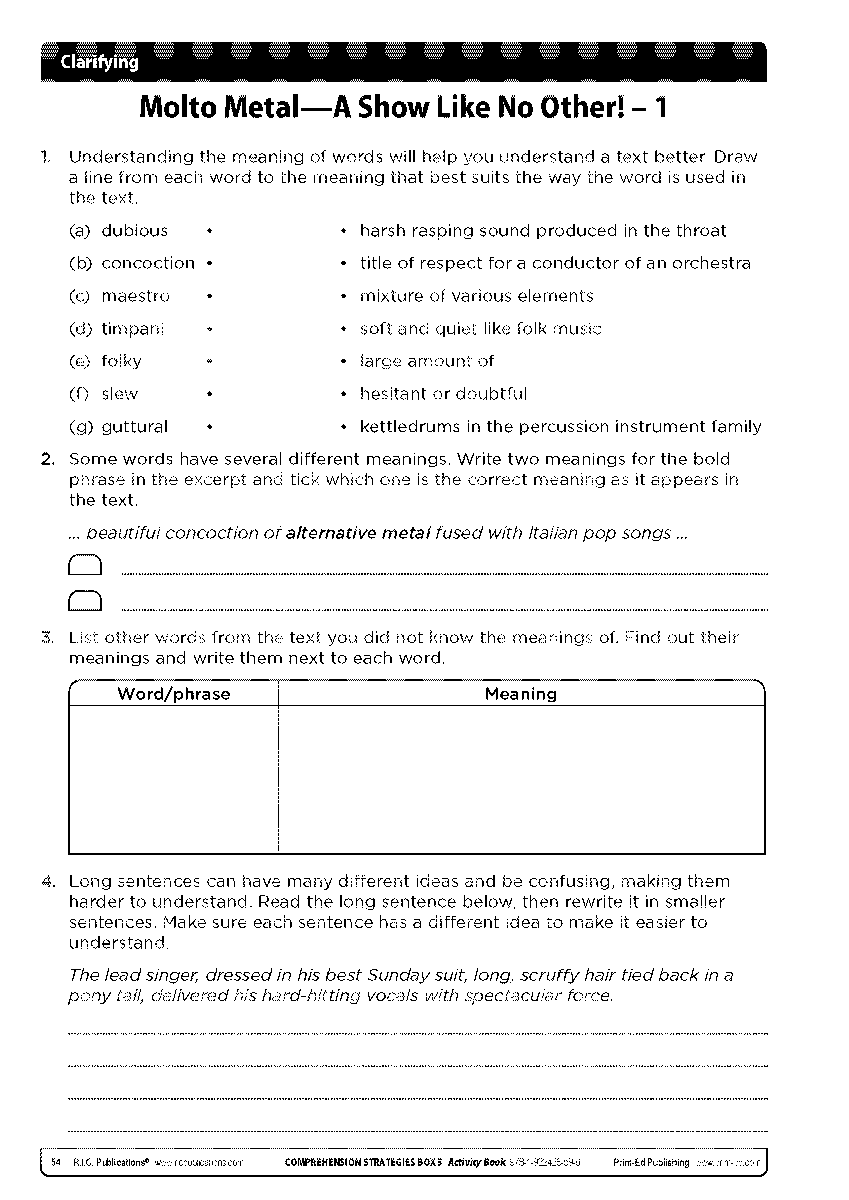
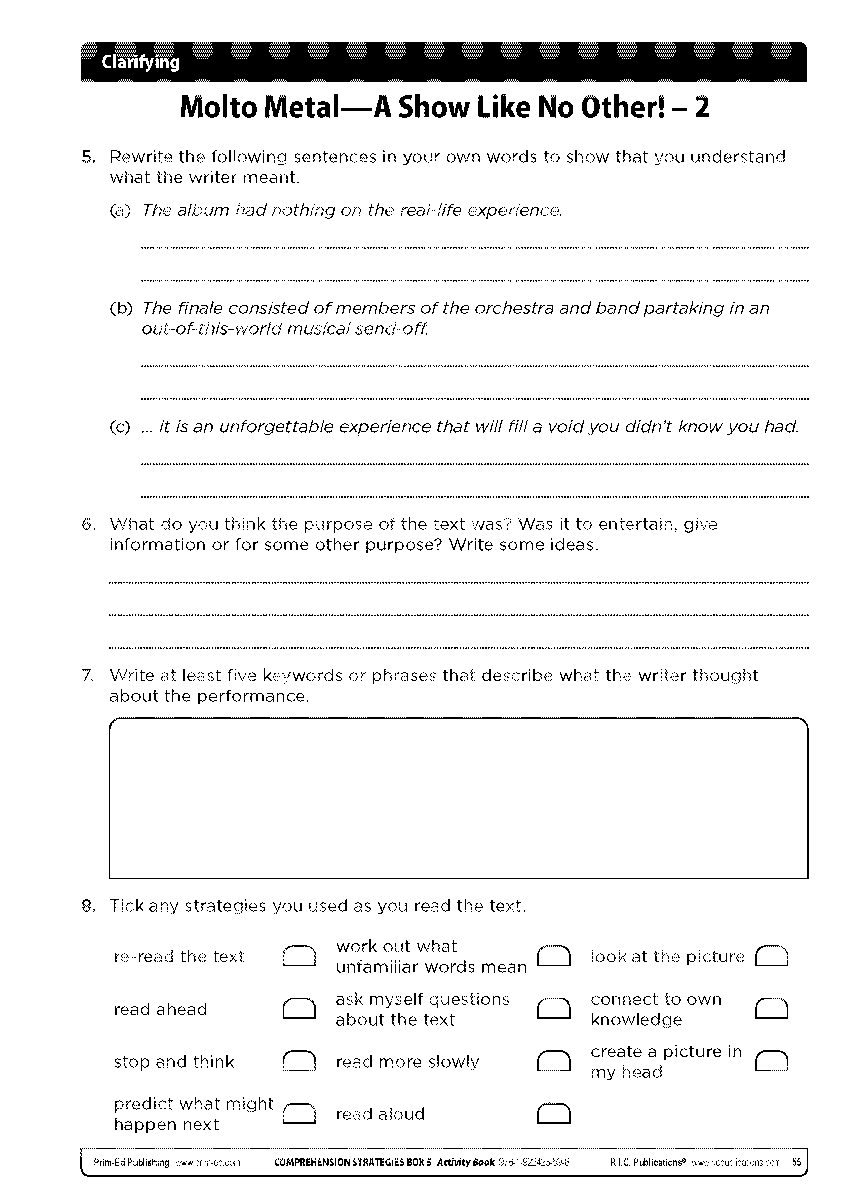
Card and sample pages from Activity Book in The Comprehension Strategies Box 5.
The teacher can use the assessment text in the teacher guide and the corresponding assessment questions to assess how well each child has understood and can use the clarifying comprehension strategy.
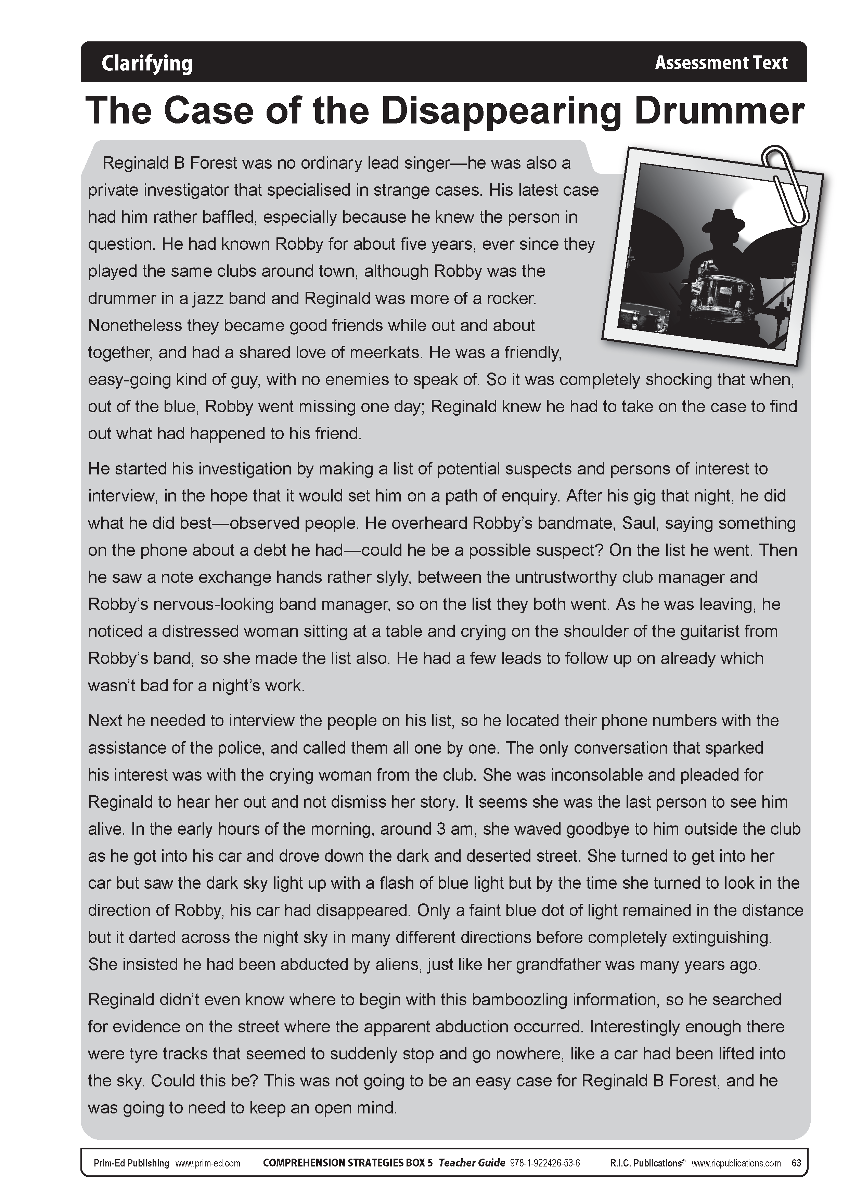
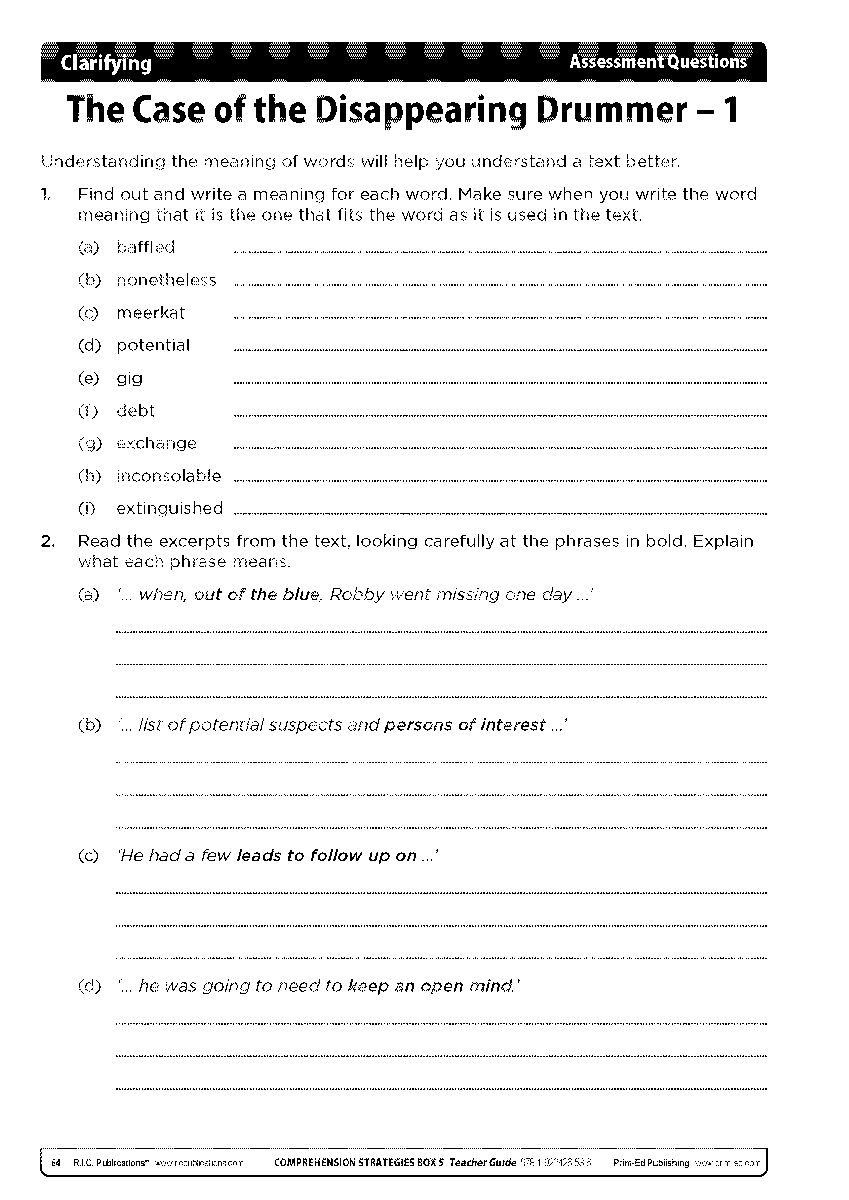
Sample pages from Teacher Guide 5 in The Comprehension Strategies Box series.
More Information About The Comprehension Strategies Box:
For further information about The Comprehension Strategies Box and to view sample cards and pages from other levels, check out the series page here.
